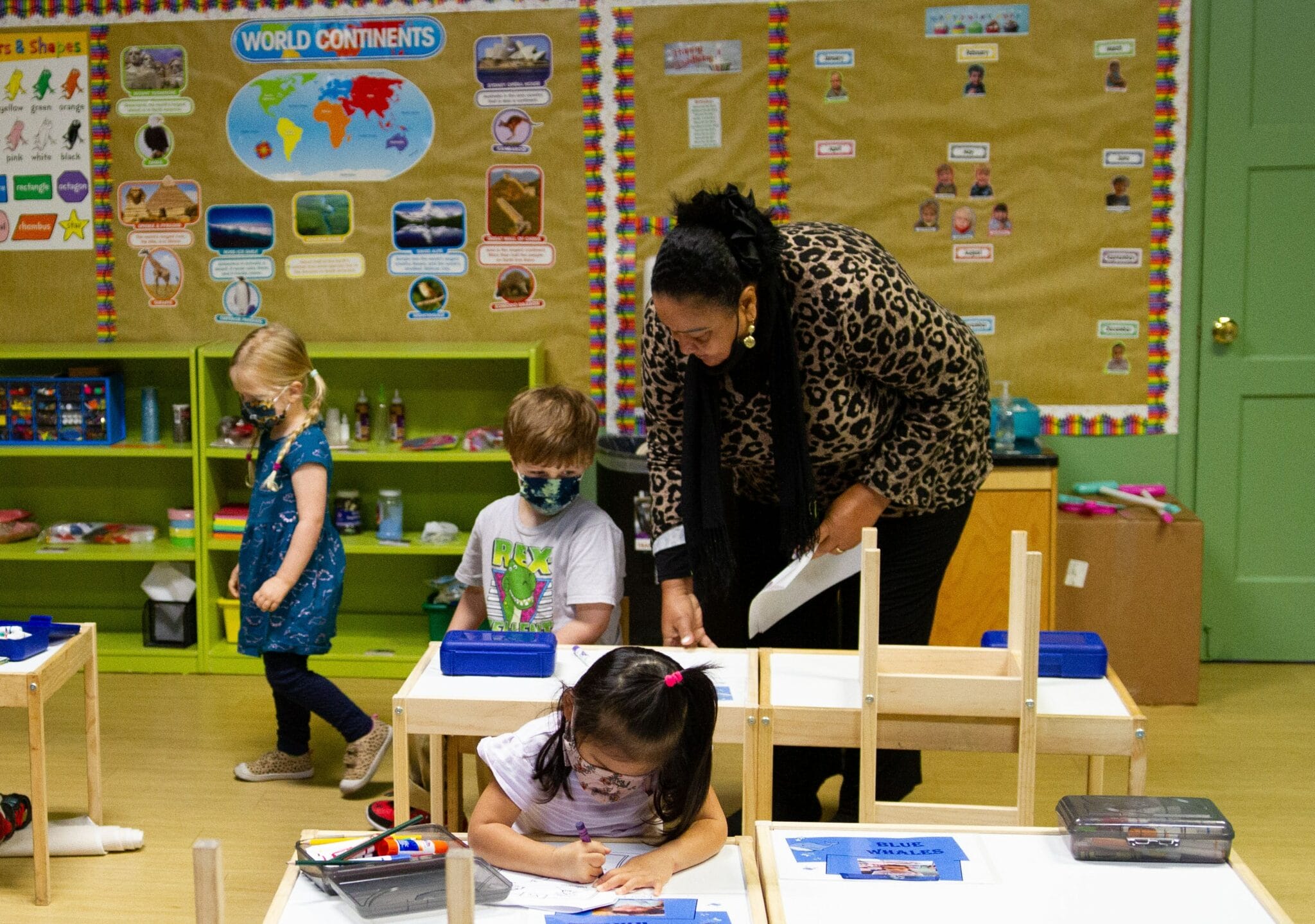This report presents the first comprehensive data collected from California’s transitional kindergarten (TK) teachers about their teaching experiences. The state is expanding transitional kindergarten (TK) into a universal preschool program for all four-year-old children.
California’s new program requires thousands of additional lead teachers and classroom aides to meet lower student-to-teacher ratio requirements and new student demand. This is a crucial moment to listen to TK teachers about what’s working in their classrooms and schools and the support, resources, and preparation they need to continue to provide a high-quality and developmentally appropriate experience for children.
Key Findings
Demographics, Education, and Experience
- The TK teachers in our sample are predominantly female (99 percent) and White (71 percent). About one fifth of teachers are multilingual.
- Children in TK classrooms are highly diverse in terms of cultural, racial, and linguistic backgrounds. Teachers reported that nearly three quarters of children in their classrooms are children of color. On average, 62 percent of students in TK classrooms speak English only, 33 percent are multilingual, and 5 percent are non-English speakers.
- One third of TK teachers (35 percent) have an associate degree or higher in child development or early childhood education.
- More than two thirds of teachers (67 percent) have met the requirement to complete 24 units of early childhood education or child development coursework. One quarter of teachers were teaching TK before the requirement took effect (26 percent), and 3 percent had the requirement waived by their district.
- The vast majority of teachers (90 percent) have prior experience teaching in kindergarten through third grade. About one third of TK teachers have prior experience teaching in other early care and education settings, such as a child care center or a family child care home.
Teaching Environment
- In the fall of 2020, TK teachers reported a median class size of 18 children. Less than one half of teachers (44 percent) had an aide for any portion of the school day; nearly two thirds of teachers who had an aide reported that their aide was available for only part of their instructional time.
- While more than one half of teachers (54 percent) agreed that their district understands developmentally appropriate practice for working with four-year-old children, this finding declines at the site level: only 40 percent agreed that their school community understands developmentally appropriate practice.
- More than one third of teachers (39 percent) reported that their classroom did not have an appropriately sized bathroom for young children. More than one quarter of teachers reported that their classroom did not have enough floor space for children nor did the school schedule allow for sufficient outdoor time for TK students.
- About one third of teachers reported that they have never had a sufficient supply budget (31 percent), enough supplies for all children in their classrooms (37 percent), or developmentally appropriate materials (31 percent).
- About one quarter of teachers reported that they did not feel part of the larger school community (22 percent) or part of the early care and education field (29 percent).
Recommendations for Policymakers
Recommendation 1: Articulate and enact community-informed strategic plans for effective TK implementation.
- Establish throughways at the district level to systematically gather and incorporate expertise from early education experts who work in TK classrooms, child care centers, and home-based settings.
- Implement community-based learning strategies across schools in order to establish a shared understanding of TK and the value of early learning and early educators to the school and broader community.
Recommendation 2: Fund and provide equity-centered training for school site and district leaders in developmentally appropriate practices for young children to ensure their readiness to provide pedagogical leadership to TK programs and teachers.
- Fund and provide professional learning opportunities for school and district leaders, building on the work of the Center for District Innovation and Leadership in Early Education (DIAL EE) and the UTK Leadership Initiative of the 21st Century California School Leadership Academy (21CSLA).
- Identify and clearly articulate school and district governance structures that identify responsibilities for TK programming and pedagogical leadership.
Recommendation 3: Ensure a supportive working environment for TK teachers to implement developmentally appropriate practice.
- Fund and provide the materials, curriculum, and consumable supplies needed for teaching four-year-old children and ensure that teachers have a classroom setup and facilities conducive to their teaching.
- Ensure that teachers have the support and resources to effectively meet the individual needs of children and families, including communicating with families and supporting children experiencing trauma.
- Ensure that TK teachers have peer support by putting into place formal opportunities for TK teachers to plan, prepare, and learn with other TK teachers in their schools and districts.
- Ensure that districts are enforcing class size limits and the 12:1 student to ratio for the full instructional day and that classroom aides are trained in early learning, supported, and fairly compensated. Clearly define “instructional day” as any contact time with children.
- Limit the use of combination classrooms, which make it difficult for teachers to meet the needs of young students.
Recommendation 4: Ensure a well-prepared and diverse TK teacher workforce reflective of California’s children, attending to both the current workforce and the future pipeline.
- Ensure equitable pathways to the PK-3 Early Childhood Education Specialist Credential for experienced early educators from center- and home-based settings who do not hold a teaching credential.
- Provide professional development to TK teachers specific to teaching preschool-age children.
- Identify and fund initiatives to support early educators to participate in the preparation requirements currently required to obtain a teaching credential.
Recommendation 5: Ensure that data collection and program evaluation are an integral part of TK expansion.
- Ensure that TK and kindergarten teacher data are collected and reported separately in California Department of Education data systems.
- Ensure that program evaluation includes data about and from TK teachers.
- Evaluate the impacts of TK on the mixed-delivery early learning system.



